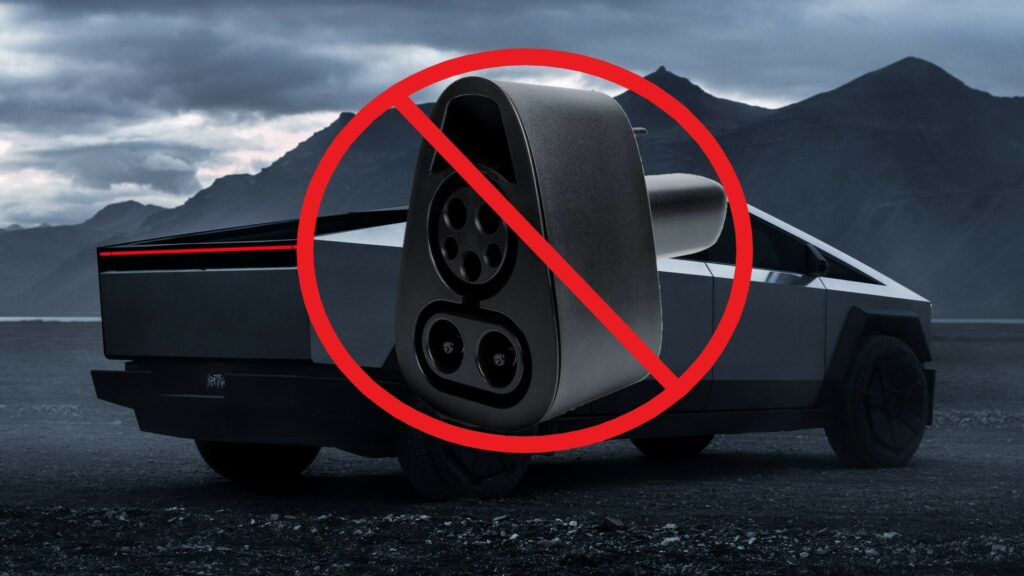While the North American Charging Standard (NACS) appears to have taken over the charging game in the U.S., the Combined Charging System (CCS) plug still has a major presence on the country’s roadways. So it might be frustrating to some buyers that the Tesla Cybertruck appears not to be able to use them.
In an X post, Kyle Connor alleges that the CCS adapter that is sold by Tesla does not fit onto its most recent vehicle because of the placement of the charge port. Nestled within the cladding around the wheel arch, the port door is nicely hidden but interferes with the adapter, apparently preventing the plug from being inserted into the socket. Tesla did not immediately respond to a request for comment.
That’s frustrating enough on its own, but Connor went one step farther, and actually took the cladding off the truck’s wheel arch — something that is apparently easy to do. Even then, the Cybertruck wasn’t able to recoup energy at a high-voltage EVgo charging station. However, Connor admitted that he didn’t try at a lower voltage charging location.
Read: Average EV Owner In The U.S. Spends 31 Minutes At A Paid Fast-Charger Per Session
CCS adapter doesn’t interface with the Cybertruck due to the plastic wheel arches.
— Kyle Conner (@itskyleconner) January 3, 2024
We ripped those suckers off and plugged it in
Wasn’t able to charge at a high voltage charger but it’s possible a low voltage one could work, but then what’s the point?
Still more testing to… pic.twitter.com/ExmFNNO7Ms
Even though the Cybertruck is still compatible with the NACS plug used by Tesla’s Supercharging locations, customers may want to consider that the automaker’s CCS adapter doesn’t appear to work very well with its new vehicle before spending $250 on one.
While the accessory is by no means a requirement for owning a Cybertruck, it is a nice little piece of insurance for drivers in other Tesla vehicles with which it works. Although Tesla’s Supercharger network is frequently cited as the industry benchmark, there are no brand loyalists when a battery is at one percent.
Even if Cybertruck owners don’t plan on using a CCS adapter, they may be disappointed by their charging experience. Reports have emerged claiming that its charging speeds slow significantly as the battery becomes fuller.
In one video (below), a Cybertruck owner showed that on his vehicle, at a reasonably busy Supercharger station, charging speed started slowing once the battery was 20 percent full. Although it was refilling at 250 kW early on, speeds dipped to below 100 kW by the time the vehicle reached 60 percent.
That meant that it took his Cybertruck around 50 minutes to go from 14 percent to 90 percent state of charge. The vehicle estimated that it would have taken another 30 minutes to reach 100 percent state of charge.
Although charging rates slow as batteries get fuller in every EV, the Cybertruck’s decline is noteworthy for its steepness, meaning that drivers may want to plan for distant journeys to last a little longer than expected.




